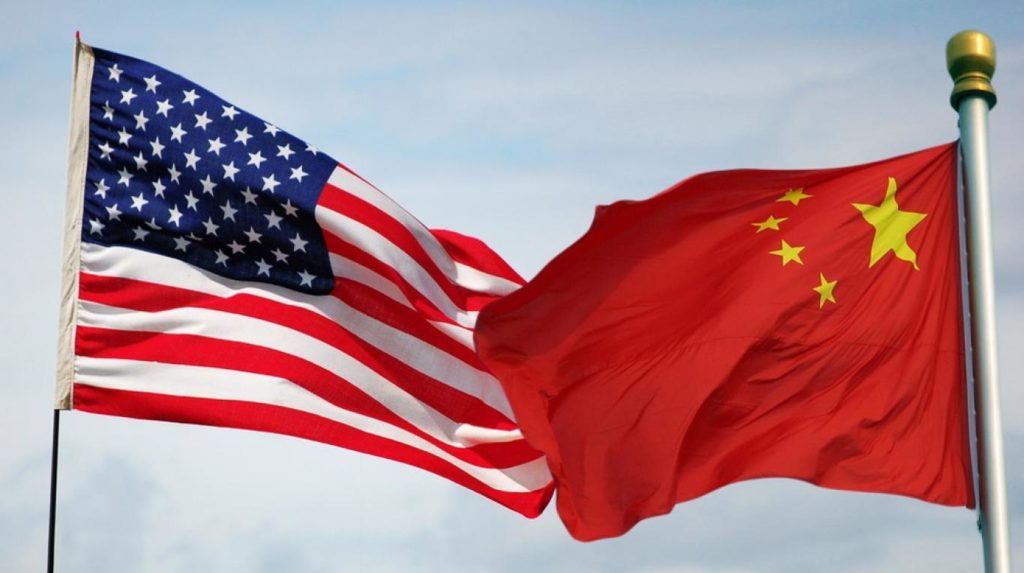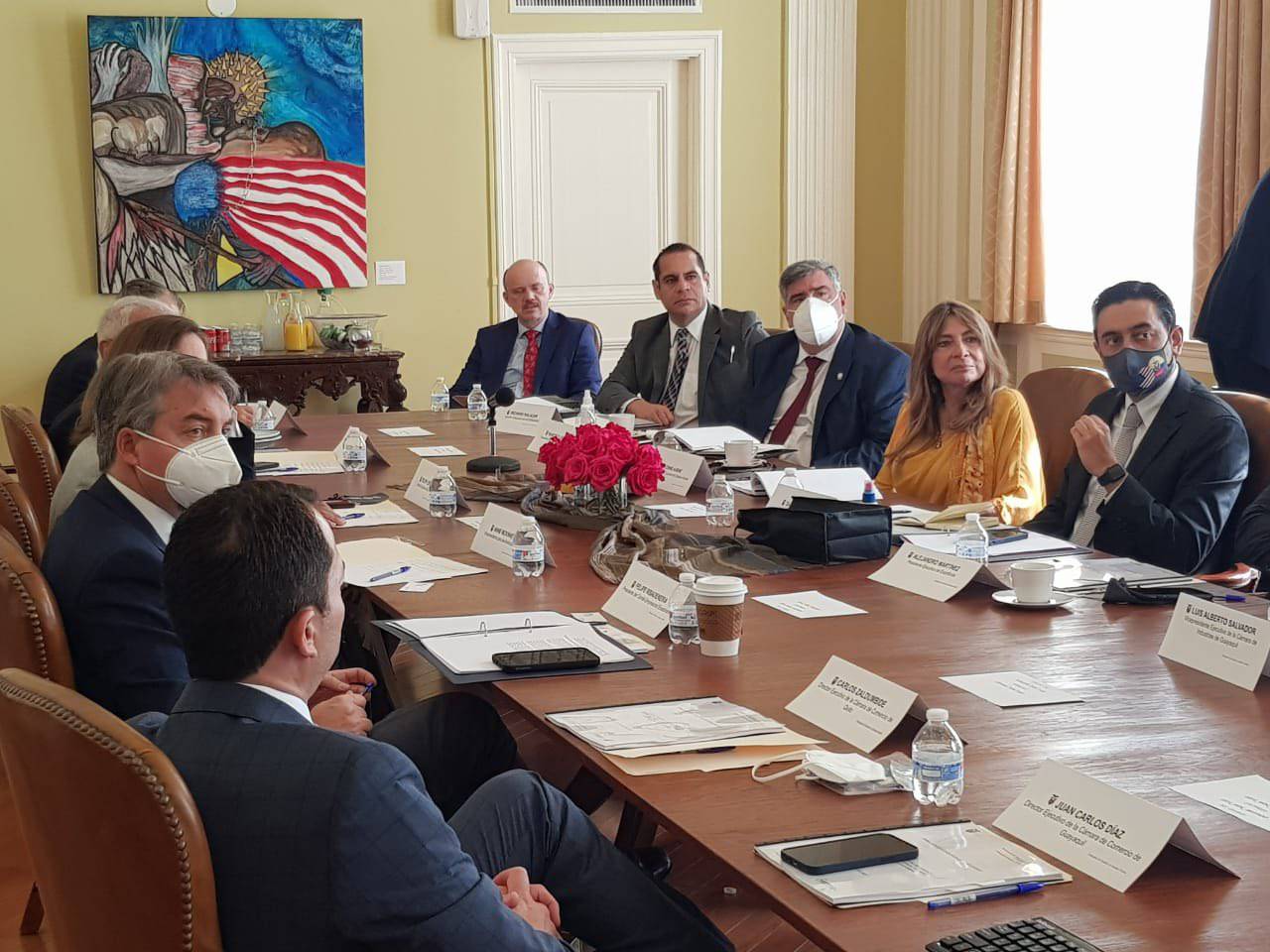Fact: the two largest superpowers in the world, the United States and China, are vying for leadership in the world political and economic order. Due to the enormous influence that both countries exert on a global scale, Ecuador and Latin America are inevitably affected by this clash of giants. But concretely, how will this conflict manifest itself and what will be the implications in the region, including in Ecuador?
When we mention a dispute between two superpowers, one of the first ideas – perhaps the most feared – is the risk of a full-scale armed conflict. The second idea is that a breakdown in relations between the two countries could lead to the freezing of trade and cooperation, or to blockades and unilateral sanctions that could affect the economy, the supply of arms, or the possibilities of migration of one of the countries immersed in the struggle.
An armed conflict between superpowers in the XXI century is a hypothesis that for experts in International Relations is increasingly unlikely. In the specific case of the US and China, the interdependence that links both countries forces them to maintain a harmonious relationship despite growing tensions. That is, they are priority trading partners and both economies depend on the purchasing power of the other, so a war between the two would cause irreversible damage to the two superpowers.
However, China’s historical conflicts around the South Sea – the Japanese islands of Senkaku – and the situation in Taiwan have been considered, for years by the United States, as possible threats to the security of the region. In the first two cases, these are old disputes over the sovereignty of the Japanese overseas territories and the Philippines. As for Taiwan, its recognition as a state and its self-determination has become the bone of contention in China’s relationship with the rest of the world. At the same time, the provocations from Beijing do not cease, to the point that last April a spokesman for the Ministry of Foreign Affairs of China warned Washington saying, “not to play with fire on the Taiwan issue and immediately stop any increase in contacts with officers of Taiwan.” Despite the warnings, the United States has deepened its relations with independent Taiwan while China gradually increases its military presence in the area.
However, there is no sign that China will cross red lines leading to an armed conflict since the consequences of a war involving the two superpowers would be catastrophic for both actors. Therefore, the conflict spreads to other areas: geopolitical, commercial, technological, and even symbolic.
It is at this point where Latin America and Ecuador are part of the disputed spaces of the two superpowers. The arrival of the pandemic has exacerbated several factors in this conflict.
Latin America and the growing eastern influence
As Latin American countries face an unprecedented economic crisis – as a consequence of the pandemic the number of poor in the region will increase by 28.7 million people, reaching 33% of its total population – the possibility exists that China will amplify its role as a financier of public works or as a buyer of raw materials throughout the region. China is the main commercial partner of Latin America. In 2019, Chinese companies invested $12.8 billion in Latin America, 16.5% more than in 2018, an investment that was mainly concentrated in the construction of public infrastructure such as ports, roads, dams, and railways.
An important point in the growth of China’s sphere of influence in the region is the arrival of the multimillion-dollar “Belt and Road” Initiative, which makes huge investments further strengthening China’s influence in the region, traditionally considered the backyard of the United States. This new interest from China in Latin America translates into political benefits for Beijing.
A clear example of the use of Chinese investment in exchange for political gains is the change of position with reference to Taiwan from several countries in the region. In the last four years, countries like the Dominican Republic, El Salvador and Panama have severed ties with Taiwan, in a clear nod to China. These alliances offer Beijing invaluable votes in the United Nations Assembly and support to strengthen China’s presence in multinational institutions.
These political turns in Latin America favorable to China are also key to empowering technology companies such as Huawei, ZTE, Dahua & Hikvision – all sanctioned by the United States – in the regional infrastructure, which will allow Beijing to dictate the rules of trade in much of the South American continent.
United States: between concern and ambiguity
 Beijing’s increased presence in Latin America has raised concerns in Washington. Although during the two terms of George Bush and Barack Obama, Washington did not hinder the gradual economic presence of Beijing in the region, it is clear that in the Trump administrations and, even more so, with Biden, concern has increased. A rethinking of the Monroe Doctrine — continental politics that promoted the defense of the Americas against possible threats to regional security from some European power — was considered in the White House, but so far actions have been slow and scant.
Beijing’s increased presence in Latin America has raised concerns in Washington. Although during the two terms of George Bush and Barack Obama, Washington did not hinder the gradual economic presence of Beijing in the region, it is clear that in the Trump administrations and, even more so, with Biden, concern has increased. A rethinking of the Monroe Doctrine — continental politics that promoted the defense of the Americas against possible threats to regional security from some European power — was considered in the White House, but so far actions have been slow and scant.
The language change that Biden has had about China is important, as was evident at the Alaska meeting between the two countries. Biden, referring to President Xi Jinping, said that he is a character who thinks that democracy has no future, and that autocracy is the way, emphasizing that Xi “does not have a democratic bone in his body,” even though he is “a very intelligent guy.”
However, it is not yet clear what the US strategy will be to curb Chinese influence in the region. A year ago, it was believed that “vaccine diplomacy” would be an important tool to improve the North American presence with its neighbors, but China has been skillful and has facilitated the distribution of Asian vaccines such as SinoVac, exercising the so-called “soft power” and demonstrating China’s intention and ability to compete against the US for leadership in Latin America.
Ecuador’s limited options
Ecuador, being a country of low international influence, has a very limited margin of maneuver in the face of a conflict that is redesigning the world order. And the first questions that arise are: with what power can we strengthen ties of cooperation? Does Ecuador have the ability to choose? The first thing is to be aware that in a scenario of accentuated rivalry, a peripheral country like Ecuador cannot rule out being related to either of these two countries, both due to economic necessity and political interests.
This situation requires that Ecuador be clear about its national priorities and strengthen its presence in regional spaces in order to generate a greater margin for negotiation with both powers. Joining the Pacific Alliance may be an important point for approaching the United States in a more favorable position, while the Andean Community of Nations, to which Ecuador has been a member since 1969, or CELAC, may be appropriate interlocutors for certain negotiations with China.
However, it is important to note that unlike what happened in the middle of the last century during the Cold War, when there were many actors with the will and ideological conviction to veto Moscow’s access to the area, this does not happen with Beijing since its capital it is welcomed and appreciated by the governments and elites of the region.
There are no influential actors – neither North American nor European – who can limit ties with China. A clear example of China’s influence capacity in Ecuador is evidenced by the delivery of six million doses of the Chinese CanSino vaccine by the Chinese government, while cooperation in this regard has not yet materialized with the United States.
Therefore, Ecuador cannot discourage economic ties with China or underestimate its political and financial closeness with the United States. Nor can we forget that Ecuador needs a harmonious relationship with Washington given the importance that the International Monetary Fund (IMF) has once again had in the national economy.
Shrewd and subtle diplomacy of equidistance will be key so that the country is not caught in a damaging zero-sum scenario between Beijing and Washington.


0 Comments